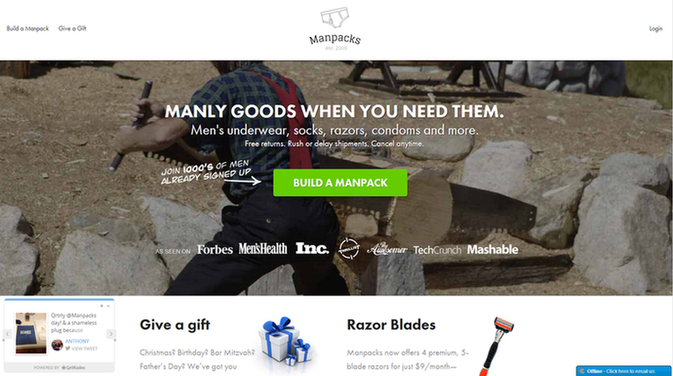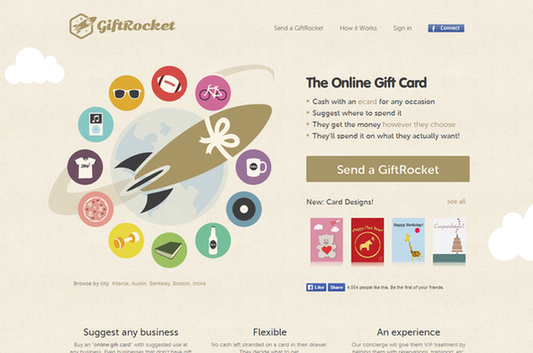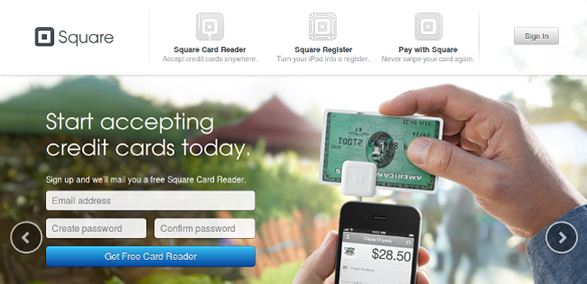Auto repair shop websites are a crucial component in attracting new business. Recent studies reveal that 65% of consumers conduct research online before they ever step foot in a store. Is your auto repair shop’s website coming up in these searches? Is it winning over potential customers?
If not, it’s time to change that - so your site becomes a reliable source of business. Here’s what you can do to have one of the best auto repair shop websites:
Design Your Auto Repair Shop Website to Sell
Almost 94% of consumers say that easy navigation is the most important website feature. Another 83% report that they appreciate a site that is visually appealing and appears up-to-date.
So, while optimizing your auto repair shop website for search engines is important, it won’t count for much if your homepage isn’t appealing and easy to follow.
Your website should have an easy-to-find navigation bar that directs your customers to the most common areas of interest. Depending on your market, these can be the following:
- Who are you? (About Us)
- What do you do? (Services)
- Do you carry my size tire and how much (Tires)
- What special programs or coupons do you offer (Specials)
- Where are you located and how can I reach you? (Contact Us)
This ease-of-navigation will not only make your auto repair shop’s website more user-friendly, but it will also keep its bounce rate down. That is, instead of bouncing back to Google, users are more likely to stay on your site if they can quickly find the information they need.
Use Images and Videos to Show Customers Exactly What to Expect
Though it won’t help your search engine rankings much, the right picture or video can quickly sell potential customers on what your shop has to offer. It can instantly show them how great you, your team, and your shop is at creating a professional car repair atmosphere.
For example, if you have a nice and inviting waiting room, include photos that show your comfy chairs and your flat screen cable television. Show pictures of your busy yet organized service bays. Show pictures of your clean and stocked bathrooms (very important to most people). Remove any hesitations they might have with regard to choosing your shop for their auto repairs. Don’t risk them worrying about whether or not it’s a place they’d want to stay at while you’re working on their vehicle.
The key is to make sure your images are clear, focused, and of high quality. No matter how great your shop looks in person, if your images are low res and out of focus, they won’t reflect well on your business. So leave the old analog flip phone camera at home and break out a digital SLR or any of the newer cell phone cameras such as the iPhone 11 Pro, Samsung Galaxy Note 10, or the Google Pixel 4.
Creating video content is another great opportunity for auto repair shops. Much like the pictures you post, video gives you an opportunity to directly tell potential customers about you, your people, and your shop. The difference between a picture vs. a video is that it gives you the opportunity to tell your story in person. So grab a selfie stick, slap on a decent smartphone and give it a shot. You don’t have to post every video and the more you make the more comfortable you’ll be in front of the camera. So turn yourself into a rockstar and give your customers another reason to select your business.
Prioritize Mobile Responsiveness Website Design
In 2016, mobile phone use overtook desktop use as a means for accessing the internet. Currently 60% of all traffic on the internet is mobile. And with all of those smartphones on the market, that trend has only continued to grow. As part of this move to smartphone access, Google has adjusted their SEO metrics to favor mobile responsive websites over the standard, non-response desktop web design. They are penalizing sites that aren’t mobile responsive. Part of the reason that Google punishes non-responsive sites is that 61% of users confirm that if a website isn’t easily navigable by phone, they immediately leave.
While making sure that your website is mobile-friendly, you also need to consider your website’s design. The size of a mobile screen is much smaller than a desktop computer, so content will look different when skewed down. Streamline your content so it’s easy for them to find exactly what they need.
It’s essential that you combine both of these tips for your repair shop’s site as 57% of users say they won’t recommend a business with a mobile site if it isn’t well-designed. So, don’t settle for just one or the other. A site that is mobile and user-friendly will achieve the best possible results.
Use a Call to Action (CTA) to Drive Results
Effective auto repair shop websites explicitly tell visitors what to do when they land on the home page. This is known as their call to action (CTA), and it can be the difference between someone scheduling an appointment or not.
Best practices for an effective CTA include the following:
- Action-packed text
- Large text
- Eye-catching colors
- A sense of urgency
- Placing it near the top of the site
Here are some great examples of CTA use:
“Build a Manpack” by Manpacks
“Send a GiftRocket” by GiftRocket
“Get a Free Card Reader” by Square
An effective CTA helps to increase conversion rates, but before you can entice a customer with your CTA, they need to find your site. That’s where SEO optimization comes in.
Ensure It’s SEO-Optimized
Search engine optimization (SEO) refers to the methods you use to improve your page ranking/placement within organic search engine results. Organic refers to non-paid search engine ranking. Simply, when customers Google ‘auto repair,’ you want your shop’s website to appear at the top of the first page of returned results . To help make this organic first page appearance happen, you should follow tried and true SEO best practices.
These steps are a great start:
Create a Blog
A large part of optimizing your website for SEO is producing fresh content. Most automotive repair shops will list their hours and available services on their websites and then walk away expecting it to do the job of enticing new customers. A blog not only provides your customers with quality content, it provides search engines such as Google, Yahoo, and Bing with reasons to put your content in their index. And, with a recent study finding that 61% of consumers have made a purchase based on a blog post, it can have a positive effect on your customer base.
An important component of any blog is the utilization of keywords. A keyword is a term someone types into a search engine to find a business, like “auto repair shop.” By sprinkling a keyword throughout a blog post, you are essentially increasing the value of your site to search engines.
There are plenty of free keyword research tools and premium platforms that will streamline a lot of this work for you. Keywords shouldn’t be reserved for blog posts only, consider using them throughout your site to increase on-page SEO as well.
Optimize for On-Page SEO
Much like creating an SEO optimized blog, on-page SEO is the practice of optimizing individual web pages to rank higher on search engines.
Web pages that utilize on-page SEO:
- Focus on a particular topic (such as oil changes)
- Include the topic in the Title Tag (or title of your page)
- Include the topic in the URL
- Include the topic in image alt text
- Include the topic several times in the text throughout the page.
- Link back to the original page
- Link back to the homepage
- Provide fresh, relevant content throughout the page
Optimize for Off-Page SEO
Off-page SEO refers to actions taken outside of your website to increase your search engine result rankings. A major component of off-page SEO is backlinks. A backlink is a link from one site to another. By including high-quality backlinks throughout your content, you will rank higher on search engines.
Best practices when using backlinks to increase SEO include:
- Linking to a popular or quality site
- Utilizing anchor text with the link
- Linking to a recently updated site
- Including other links on the page
In addition to giving backlinks on your site, earning backlinks to your site from other reputable sites helps your off-page SEO as well. The more trustworthy, popular, and high-authority a site is that provides a backlink to your page, the more valuable that backlink will be.
As an example, if parts and manufacturer distributors (like O’Reilly and Goodyear) link back to your website as an authorized retailer or installer of their parts, those are valuable backlinks to your site. So, if you have the opportunity to get listed on manufacturer and parts websites like these, take it.
In addition to using backlinks to increase your off-page SEO, other contributing practices include:
- Guest blogging
- Social media marketing
- Influencer marketing
- Linked and unlinked brand mentions
Companies, like BayIQ, can automate some of your off-page SEO by helping to manage some of your social media and by facilitating online reviews, immediately pushing the results to your Facebook or Google Business Pages.
Put a Spotlight on Your Services Page
While creating a blog, utilizing keywords, and including backlinks are all important to your auto repair shop website’s chances of showing up on a search engine, but remember to highlight everything you offer.
Essentially, your services page gives you the chance to explain how your product or service can benefit a customer or solve a problem they might have. For example, if winter is approaching you may want to feature snow tires or no-freeze wiper fluid.
Make the Branding Cohesive
Finally, it’s important that you don’t think of your auto repair shop website as completely distinct from your other marketing assets. Instead, it should seamlessly fit with all of your other efforts into one cohesive marketing strategy.
The goal is to tell the same story across all platforms so your customers and prospects can always recognize you. You can do this by incorporating the following on all marketing initiatives:
- The same unique fonts, colors, and graphics
- Your company’s mission and values
- The same voice, tone, and style in writing
How BayIQ Can Help
Having an easy-to-navigate website that’s optimized for SEO is a great way to bring in new business, but how do you ensure that those new customers keep coming back? With BayIQ!
BayIQ is an automated marketing platform made specifically for the auto repair and tire industry to increase car count and spend per visit through a variety of different marketing tools. From loyalty programs and online reviews to appointment scheduler and service reminders, BayIQ has the experts to guide your strategy and the tools to execute it.





